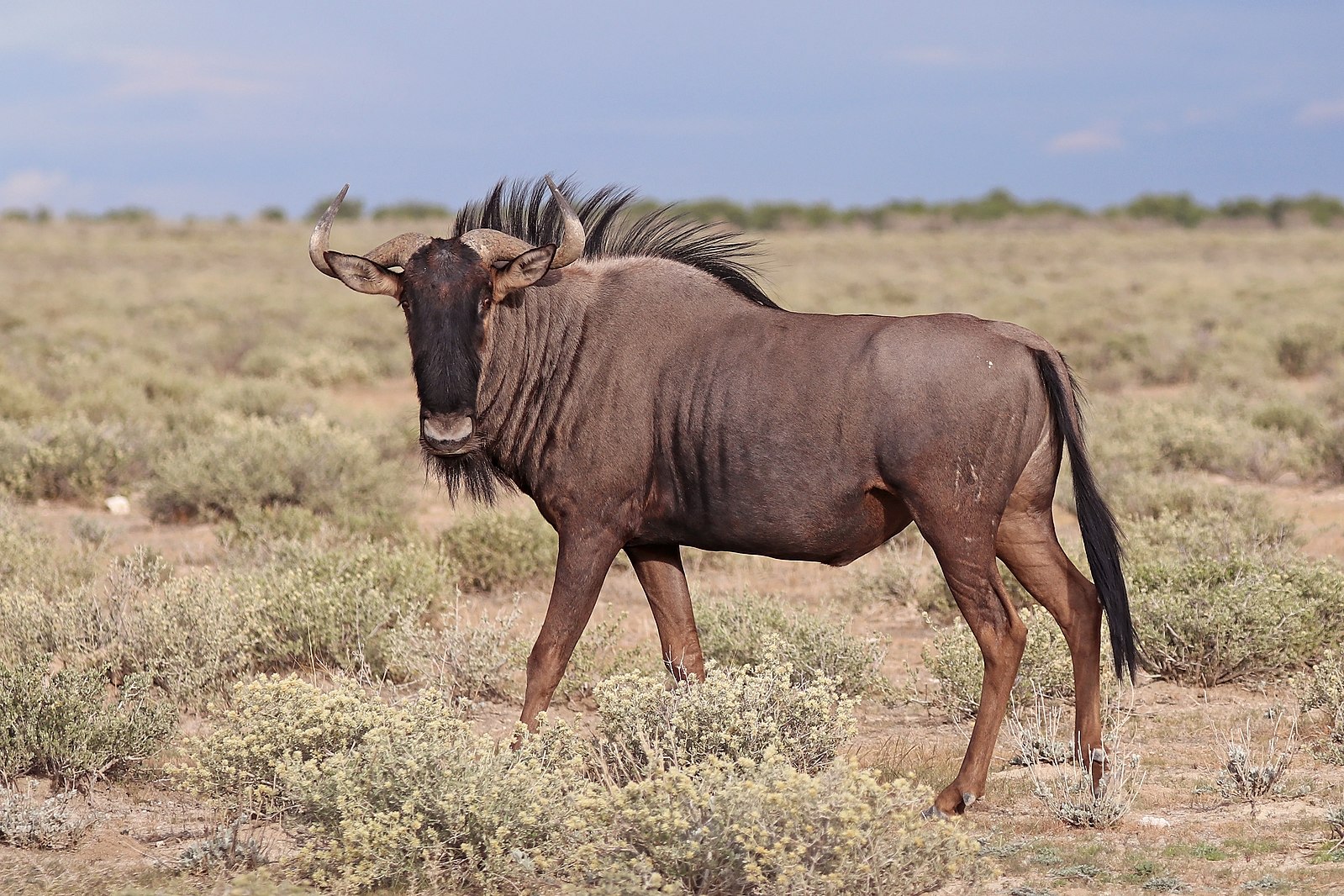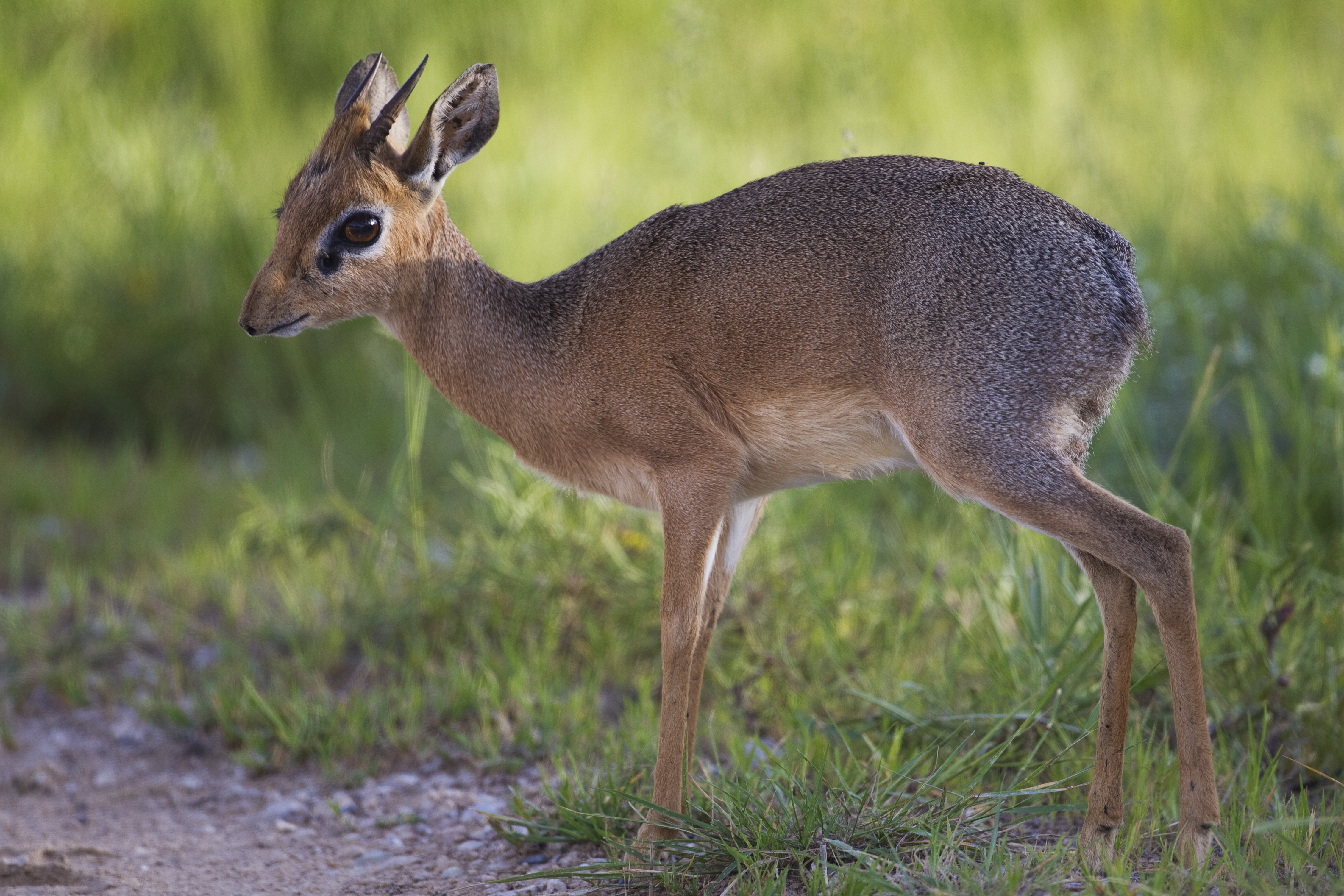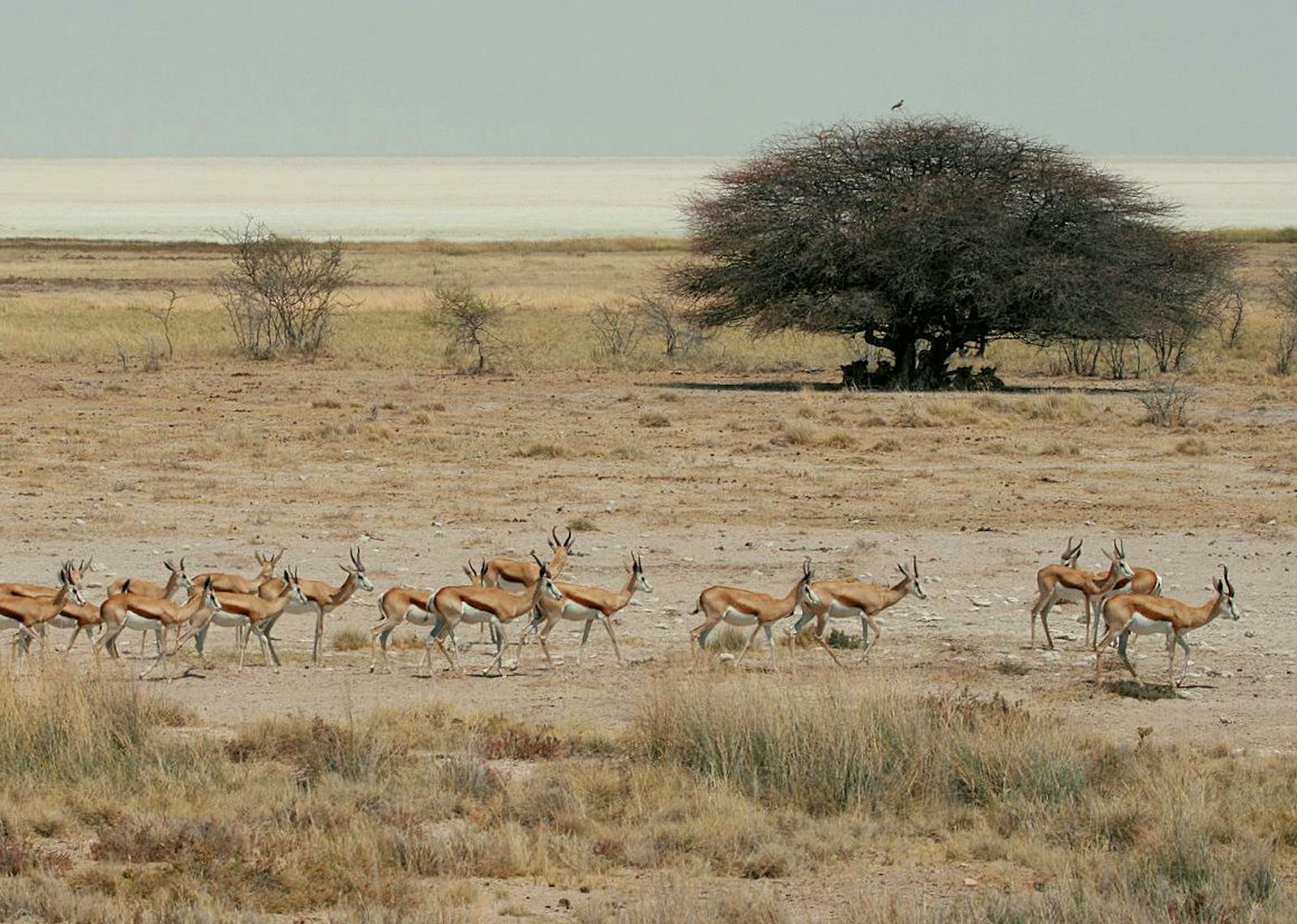Etosha Pan Halophytics
The ecoregion’s land area is provided in units of 1,000 hectares. The protection goal is the Global Safety Net (GSN1) area for the given ecoregion. The protection level indicates the percentage of the GSN goal that is currently protected on a scale of 0-10.
Bioregion: Greater African Subequatorial Savannas & Mixed Woodlands (AT11)
Realm: Afrotropics
Ecoregion Size (1000 ha):
773
Ecoregion ID:
70
Conservation Target:
99%
Protection Level:
10
States: Namibia
Situated entirely within Etosha National Park, Namibia, the large, saline depression, roughly 4,850 km2 in size, is the remnant of a large, inland Pliocene lake and is the largest pan system in Namibia. Etosha, along with Sua Pan in Botswana, is especially important as a breeding site for the greater and lesser flamingo. In flood years, up to 1.1 million flamingos have been recorded. Additionally, the ecoregion supports one of the largest black rhino populations in the world.
The pan is located on the interior southern plain of the Owambo Basin and numerous smaller salt and clay pans surround the main pan. The mean annual rainfall of the Etosha National Park is about 430 mm. Most of the rain falls in late summer and there are large rainfall fluctuations from one year to another. Climatically, there are normally three distinct seasons: hot and wet (January to April), cool and dry (May to August), and hot and dry (September to December).
%20-%20Creative%20Commons.jpg)
The flagship species of the Etosha Pan Halophytics ecoregion is the great white pelican. Image credit: Creative Commons
Temperatures can be extreme, ranging from below zero in winter to over 45 °C in summer. In Pliocene times, the Kunene River flowed into a large inland lake. Continental uplift changed the course of the river towards Ruacana Falls in the west, cutting off the lake’s water supply. During the drying process, the soil of the pans became mineral-rich. Wind erosion deepened the depression over millions of years. Today, the pan is subject to periodic, partial flooding during the rainy season.
Direct rainfall accounts for only a small proportion of the pan’s water; three rivers supply the majority: the Ekuma, Oshigambo, and Omuramba Owambo. Most of the time the pan is a dry, saline desert, and water is found only in numerous waterholes surrounding the pan which are fed by aquifers at various depths.
The harsh climate of the pan makes it an unsuitable habitat for most animals. Vegetation is scarce, and floodwater, when present, is extremely salty. Only highly specialized, salt-tolerant fauna adapted to withstand long, dry periods, and respond rapidly to rainfall inhabit the pan. These are mainly crustacea, which dominate this environment because of their short life cycles and desiccation-tolerant eggs.

Blue wildebeest. Image credit: Creative Commons
In contrast to the desolate pan, the waterholes at the fringes of the pan (particularly in the south) are the sites of spectacular congregations of large ungulates, such as Burchell’s zebra, blue wildebeest, and springbok. Other species include elephant, giraffe, black rhinoceros, gemsbok, eland, greater kudu, steenbok, Damara dik dik, and the black-faced impala. More recently white rhino has been introduced. Predators, such as lion, leopard, cheetah, spotted hyena, and brown hyena also occur.
During the wet, summer months, the wildlife moves away from the waterholes to utilize the lush grazing and temporary pools, mainly to the west of Etosha National Park park. Springbok, zebra, and wildebeest undergo some of the largest movements by the thousands. The Etosha National Park also has a rich bird fauna. When it is flooded, great white pelicans breed in large numbers. Etosha is also home to the only breeding population of blue crane outside South Africa.
The Etosha Pan is completely protected within Etosha National Park, although some nearby pans fall outside the park boundary. In addition, it is one of four wetlands in Namibia initially designated as a Ramsar site of international importance.

Damara dik dik. Image credit: Yathin S Krishnappa, Creative Commons
While the pan itself is well protected within Etosha National Park, the Cuvelai drainage system that extends to the north of the ecoregion is essential to the ecology of the pan. However, this system falls outside of the protected area network. Any alteration of water flow within this system could have a devastating effect on the ecology of the pan.
A major diversion of water flow would, for example, prevent the pan from flooding, and the huge flocks of flamingos and pelicans would lose their breeding ground. Another major threat to the ecology of the Etosha Pan is the introduction of pesticides and insecticides into the system. National campaigns to combat human and stock disease vectors and agricultural pests have had a negative impact on the aquatic invertebrate fauna of the Cuvelai system that feeds the pan, as well as birds such as the lesser flamingo and white pelican.
Large mammals surrounding the pan have also declined due to predators and disease, such as anthrax which affects herbivorous wildlife and livestock. Anthrax is an infectious disease and outbreaks occur during the wet season in Etosha National Park. It is influenced by seasonal nutritional stress and increased pathogen exposure from soil ingestion.
The priority conservation actions for the next decade will be to: 1) increase research relating to ecosystem management with relevance to policy makers; 2) increase the use of organic environmentally friendly fertilisers and pesticides; and 3) encourage local communities to participate in sustainable water resource management, for example, rainwater harvesting.
Citations
1. Burgess, N., Hales, J.A, Underwood, E., Dinerstein, E., Olson, D., Itoua,I., Schipper, J., Ricketts, T. and Newman, K. 2004. Terrestrial Ecoregions of Africa and Madagascar: A conservation assessment. Washington DC, USA: Island Press.
2. Ministry of Environment and Tourism. 2014. Namibia’s second national biodiversity strategy and action plan 2013-2020. Windhoek, Namibia: Government of the Republic of Namibia.
3. Mendelsohn, J., El Obeid, S., Roberts, C. 2000. A profile of north-central Namibia. Windhoek, Namibia: Directorate of Environmental Affairs.
4. Turner, W.C., Imologhome, P., Havarua, Z., Kaaya, G.P., Mfune, J.K., Mpofu, I.D. and Getz, W.M. 2013. Soil ingestion, nutrition and the seasonality of anthrax in herbivores of Etosha National Park. Ecosphere. 4(1), pp.1-19.




